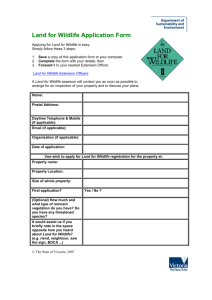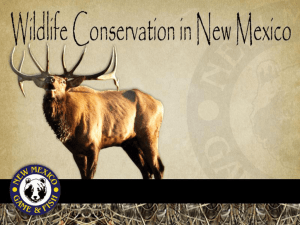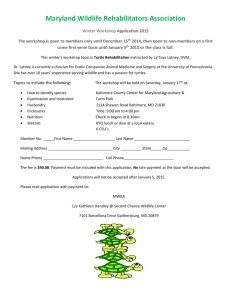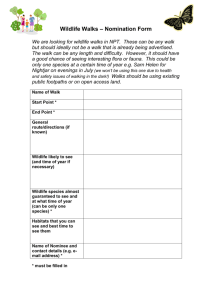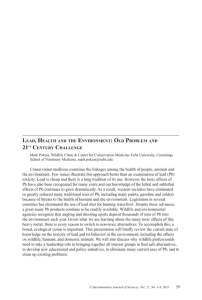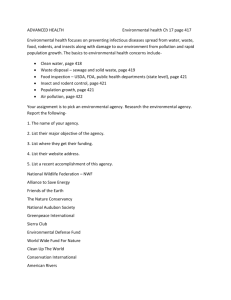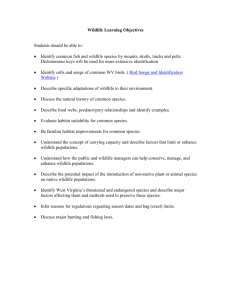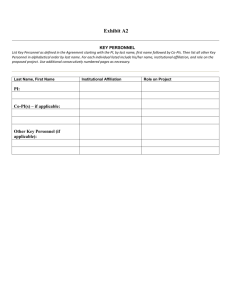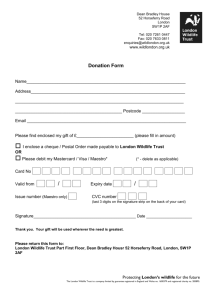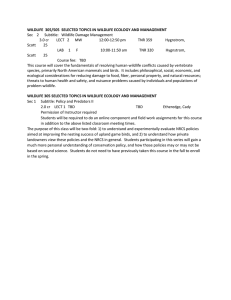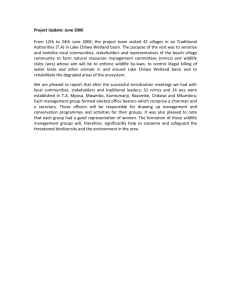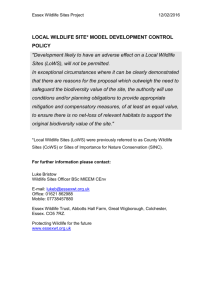Disease Surveillance Form - Manual of Common Diseases and
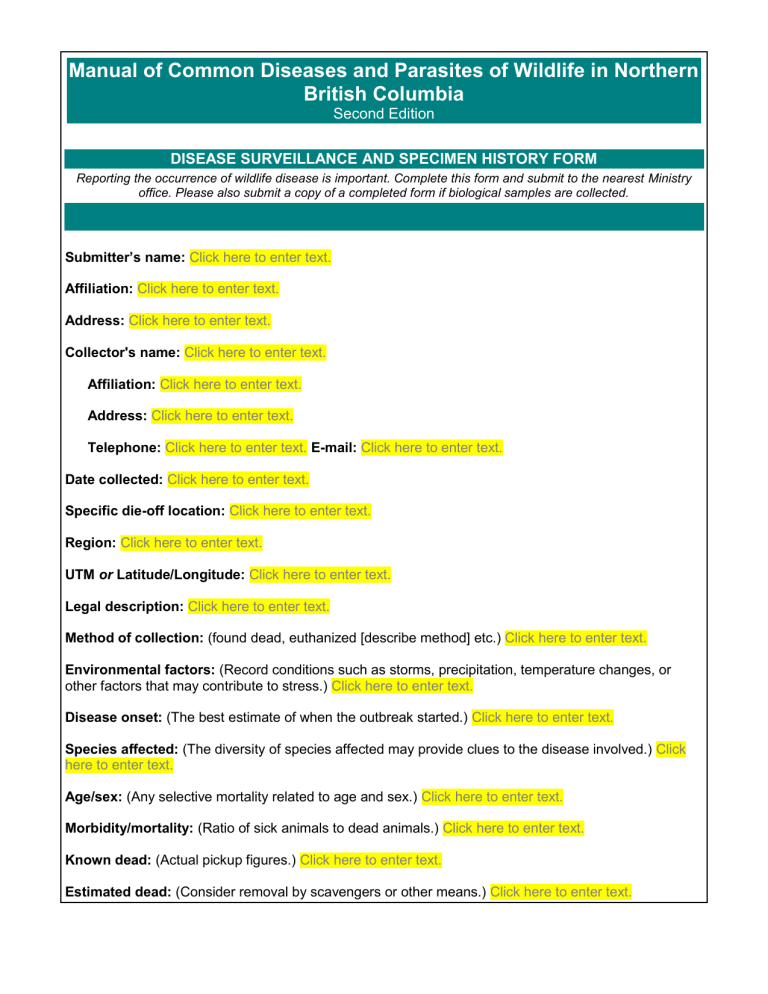
Manual of Common Diseases and Parasites of Wildlife in Northern
British Columbia
Second Edition
DISEASE SURVEILLANCE AND SPECIMEN HISTORY FORM
Reporting the occurrence of wildlife disease is important. Complete this form and submit to the nearest Ministry office. Please also submit a copy of a completed form if biological samples are collected.
Submitter’s name:
Click here to enter text.
Affiliation: Click here to enter text.
Address: Click here to enter text.
Collector's name: Click here to enter text.
Affiliation: Click here to enter text.
Address: Click here to enter text.
Telephone: Click here to enter text.
E-mail: Click here to enter text.
Date collected: Click here to enter text.
Specific die-off location: Click here to enter text.
Region: Click here to enter text.
UTM or Latitude/Longitude: Click here to enter text.
Legal description: Click here to enter text.
Method of collection: (found dead, euthanized [describe method] etc.) Click here to enter text.
Environmental factors: (Record conditions such as storms, precipitation, temperature changes, or other factors that may contribute to stress.) Click here to enter text.
Disease onset: (The best estimate of when the outbreak started.) Click here to enter text.
Species affected: (The diversity of species affected may provide clues to the disease involved.) Click here to enter text.
Age/sex: (Any selective mortality related to age and sex.) Click here to enter text.
Morbidity/mortality: (Ratio of sick animals to dead animals.) Click here to enter text.
Known dead: (Actual pickup figures.) Click here to enter text.
Estimated dead: (Consider removal by scavengers or other means.) Click here to enter text.
Clinical signs: (Any unusual behavior and physical appearance of affected animals.) Click here to enter text.
Population at risk: (Number of animals in the area that could be exposed to the disease.) Click here to enter text.
Population movement: (Recent changes in the number of animals on the area and their source or destination, if known.) Click here to enter text.
Problem area description: (Land use, habitat types, and other distinctive features.) Click here to enter text.
Comments: (Additional information/observations that may be of value such as past occurrences of disease in area.) Click here to enter text.
The above adapted from: U.S. Department of the Interior and U.S. Geological Survey. 2001. Field Manual of
Wildlife Diseases: General Field Procedures and Diseases of Birds . M. Friend, J.C. Franson (Tech. eds.), E.A.
Ciganovich (ed.). Biological Resources Division Information and Technology Report 1999 –001. U.S. Department of the Interior and U.S. Geological Survey. Washington, DC
